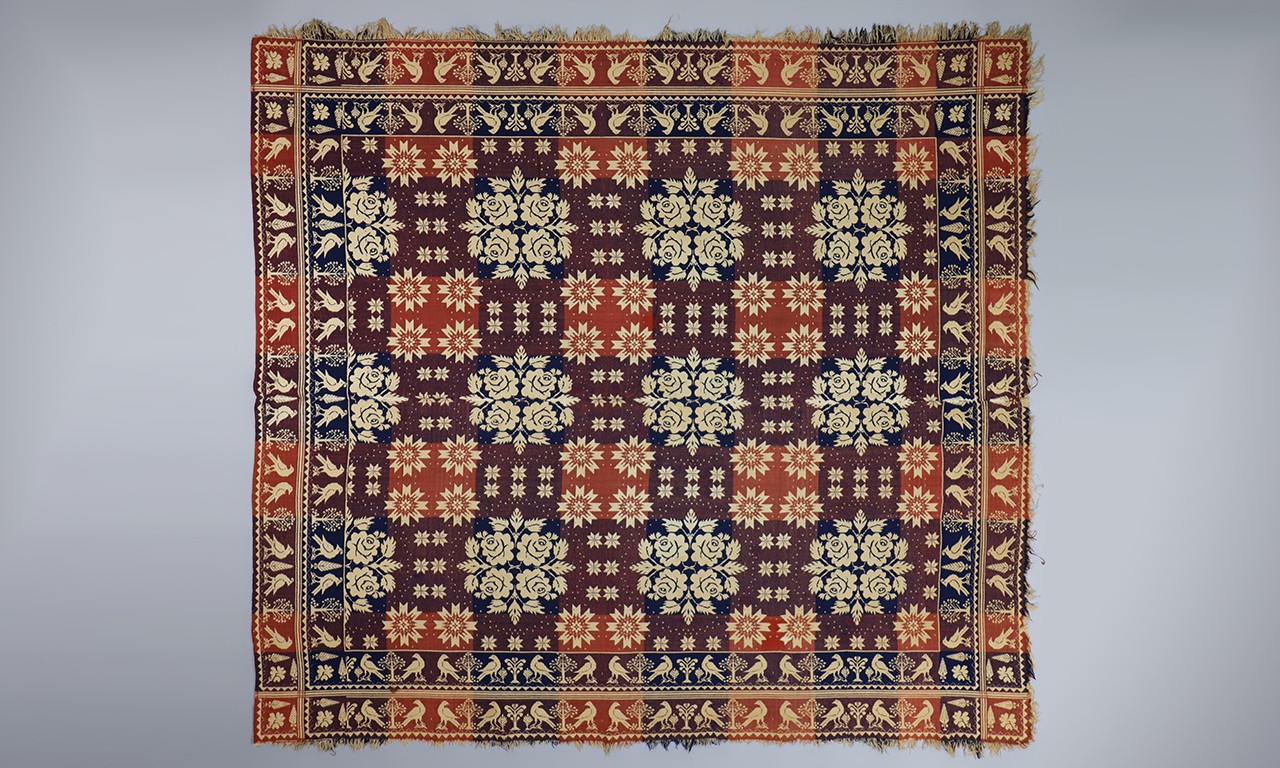 |
Coverlet, c. 1845
Unrecorded American artist; Kansas
Cotton; 82 × 90 in.
31045
Gift of Daisy F. Brown |
Woven Stories
Coverlets, single-layered bedcoverings, are distinct from quilts but share in a lot of aspects of their creation and use. In the 19th century, coverlets were in many cases one of the few artforms made by American women, who had been denied equal access to other creative artistic outlets. However, as the works featured in this post evidence, some of the most prolific coverlet manufacturers were men. Even when this is the case, the 55 coverlets in the Bowers’ permanent collections hold the stories of their overwhelmingly female recipients as much as their makers. This post looks at five 19th century Bowers coverlets made with Jacquard looms.
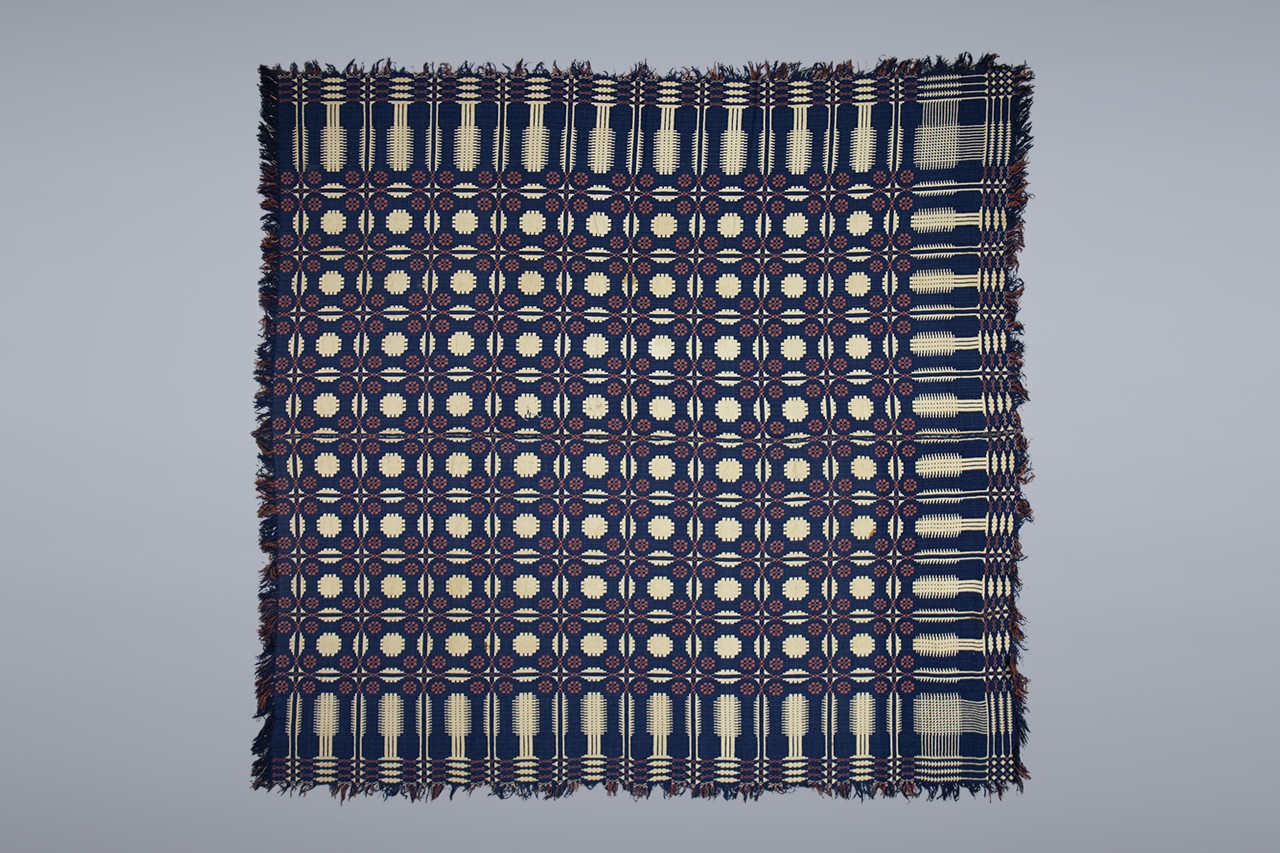 |
Coverlet, early 19th Century
Unrecorded American artist; Ohio
Cotton
39508
Gift of Ms. Laura McKeever |
Miss the Forest for the Trees
Coverlets came to the United States from Europe and peaked in popularity in the 19th century coinciding with the arrival of the Jacquard attachment, a selective shedding mechanism added to a loom that allowed for the creation of incredibly intricate patterns. The above coverlet made by an unidentified Ohioan features a design that predates the Jacquard attachment but may have been made later. Its repeating central motif is called the “single snowball” and the border is called a “pine tree.” This textile was almost certainly made by a professional weaver, as is the case with almost all coverlets like this that have two intercrossed plain weave structures, also known as double cloth coverlets. The double cloth technique originated in Germany and England and required a loom with around 20 shafts to create.
Coverlet for Harriet Richards, c. 1840
Harry Tyler (American, 1801-1858); Jefferson County, New York
Wool and flax fiber; 76 × 86 in.
31710
Gift of Dorothy Carlson Hinton |
White Picket Fence
This coverlet was made by Harry Tyler, an incredibly prolific New York State weaver that made as many as 300 coverlets in this exact style with only minor differences. Between the 1830s and ‘50s in upstate New York, Tyler coverlets were in high demand. Their cost assured that they were only purchased for upper-class brides-to-be. Little is known about the original owner, Harriet Richards, aside from her social standing. The design itself is quite interesting. It is a double woven Jacquard like the others in this post and features a stars and flowers pattern in the center with an alternating fruit tree and picket fence border. The lion corner blocks are signatures of Tyler’s work. He used the lion motif religiously until the mid-1840s when his son suggested transitioning to the more patriotic eagle.

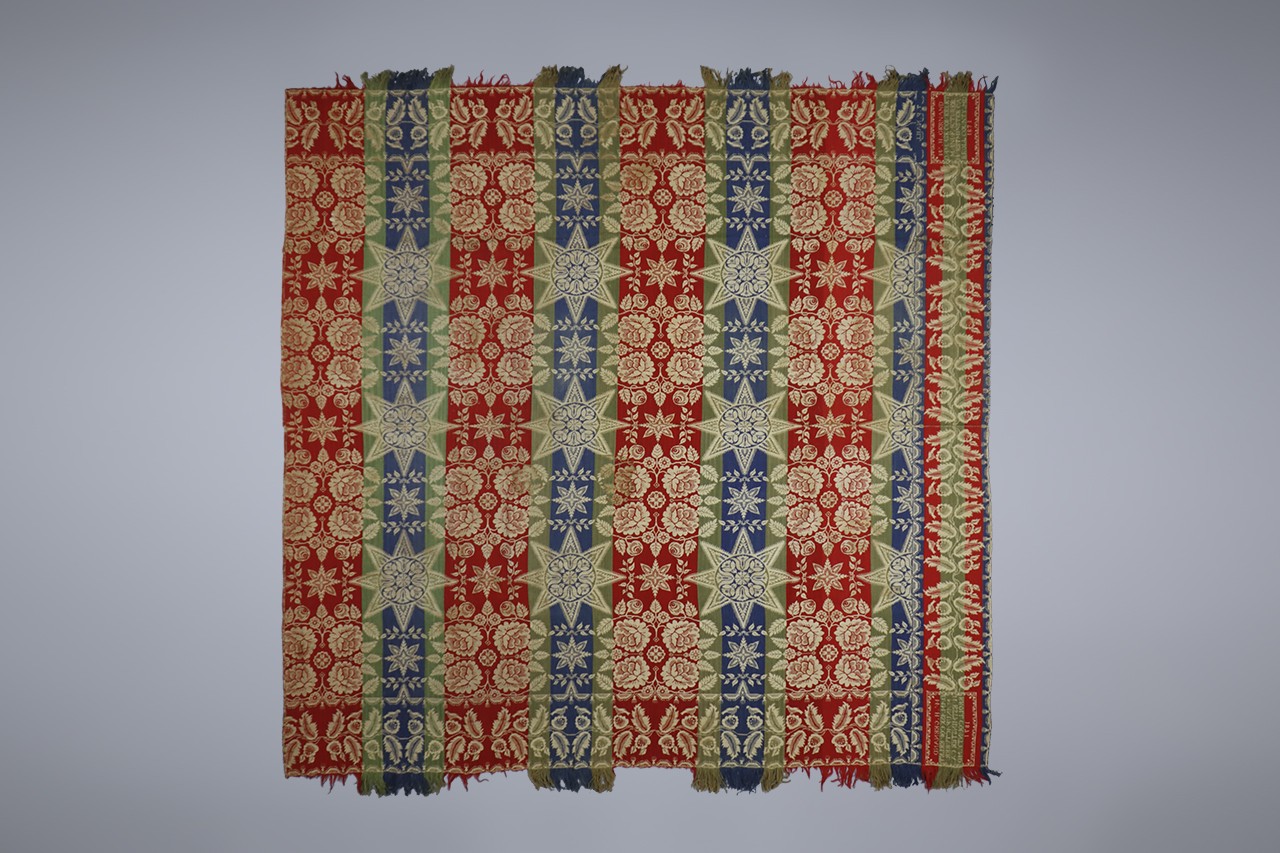 |
Coverlet for T. F. Naill, 1871
William H. Gernand (American, 1823-1893); Westminster, Carroll County, Maryland
Cotton; 87 1/2 × 90 in.
35812
Gift of Mr. & Mrs. Theodore F. Naill, Jr. |
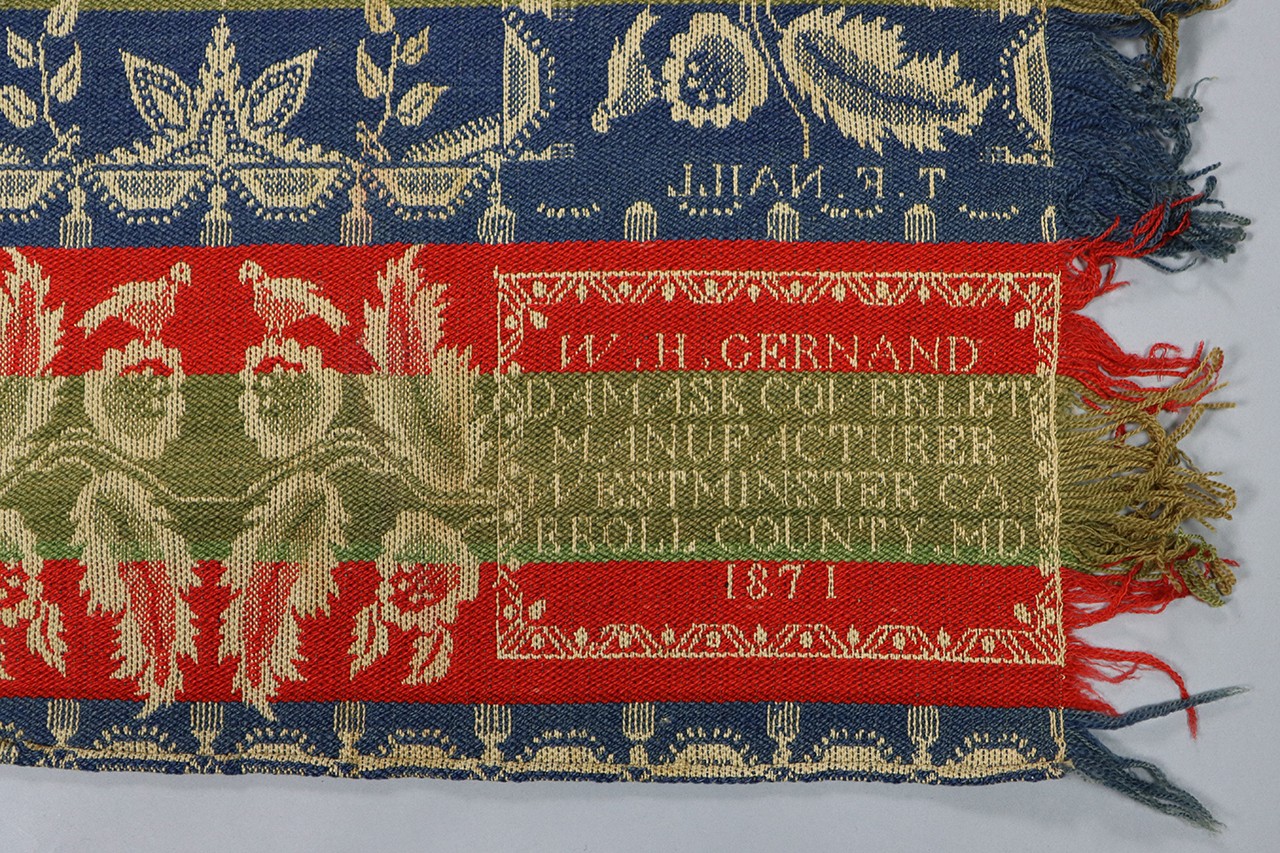 |
Detail of Coverlet for T. F. Naill, 1871
William H. Gernand (American, 1823-1893); Westminster, Carroll County, Maryland
Cotton; 87 1/2 × 90 in.
35812
Gift of Mr. & Mrs. Theodore F. Naill, Jr. |
Baker’s Dozen
While not entirely infrequent for coverlets to be made by men, this one sets itself apart from others by having a male maker and male recipient—that it came from Maryland is also rare for entirely unrelated reasons. Part of this is due to there not being many weavers working in Maryland during the height of the coverlets craze, but also that the few makers like William Gernand seem not to have made many coverlets. In 1978, the last time a formal volume attempted to quantify his body of work, only 13 were recorded. Theodore F. Naill, the father of the donor, received this coverlet from his own father, David, who had a coverlet woven for each of his sons to be given to them on their 21st birthday. At least one other example at the Henry Ford Museum bears a great degree of similarity to this one. Both feature predominantly floral patterns—this one is a double rose design with an eight-pointed star—and, more uniquely, repeating bands of red, green, and blue. The word “Damask” that appears in Gernand’s signature block implies that either the textile or technique originated in Damascus but is something of a misnomer as it refers exclusively to textiles made on Jacquard looms, both the technology and techniques of which came from Europe.

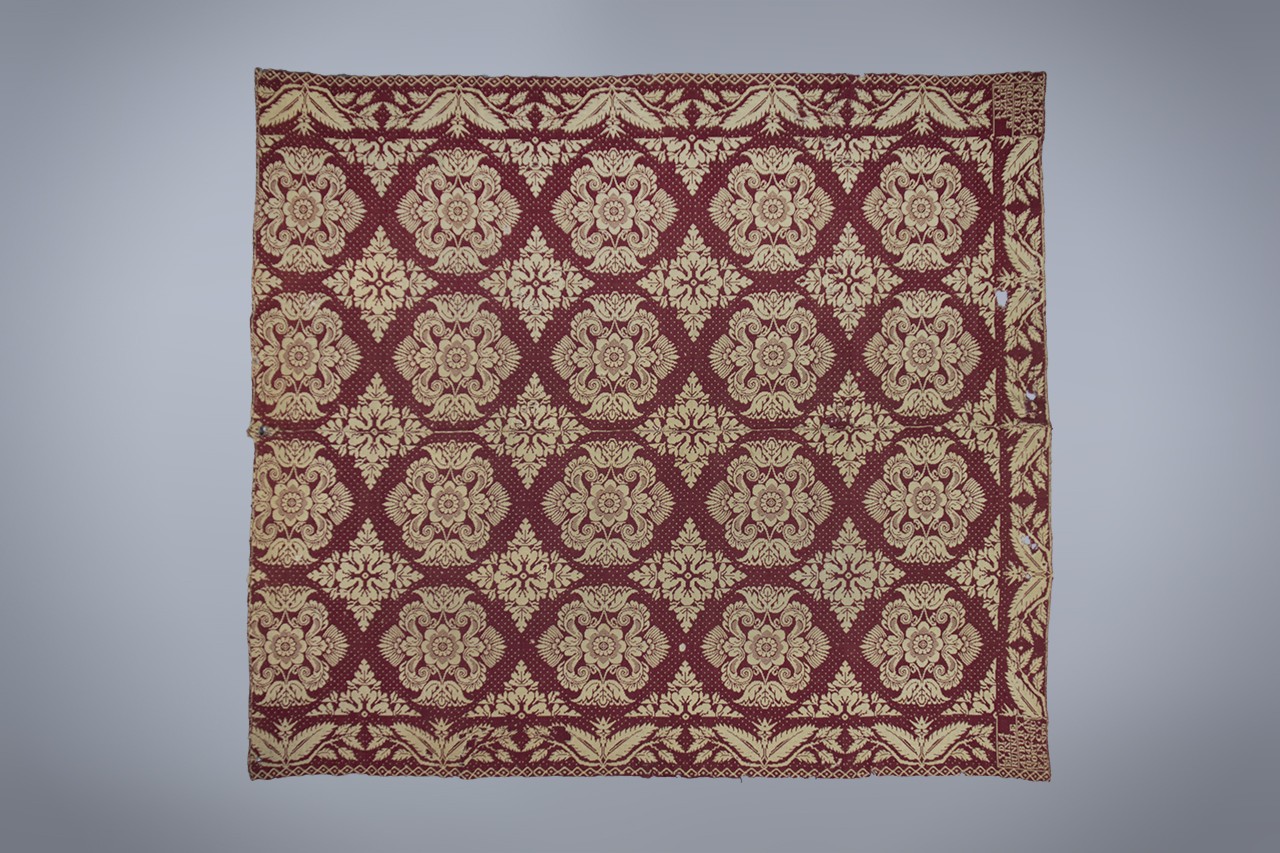 |
Coverlet for Lydia and Eliza Runkle, 1844
Christian Van Nortwick (American, c. 1802-?); Asbury, New Jersey
Cotton; 88 in.
40581i
Gift of Natalie White |
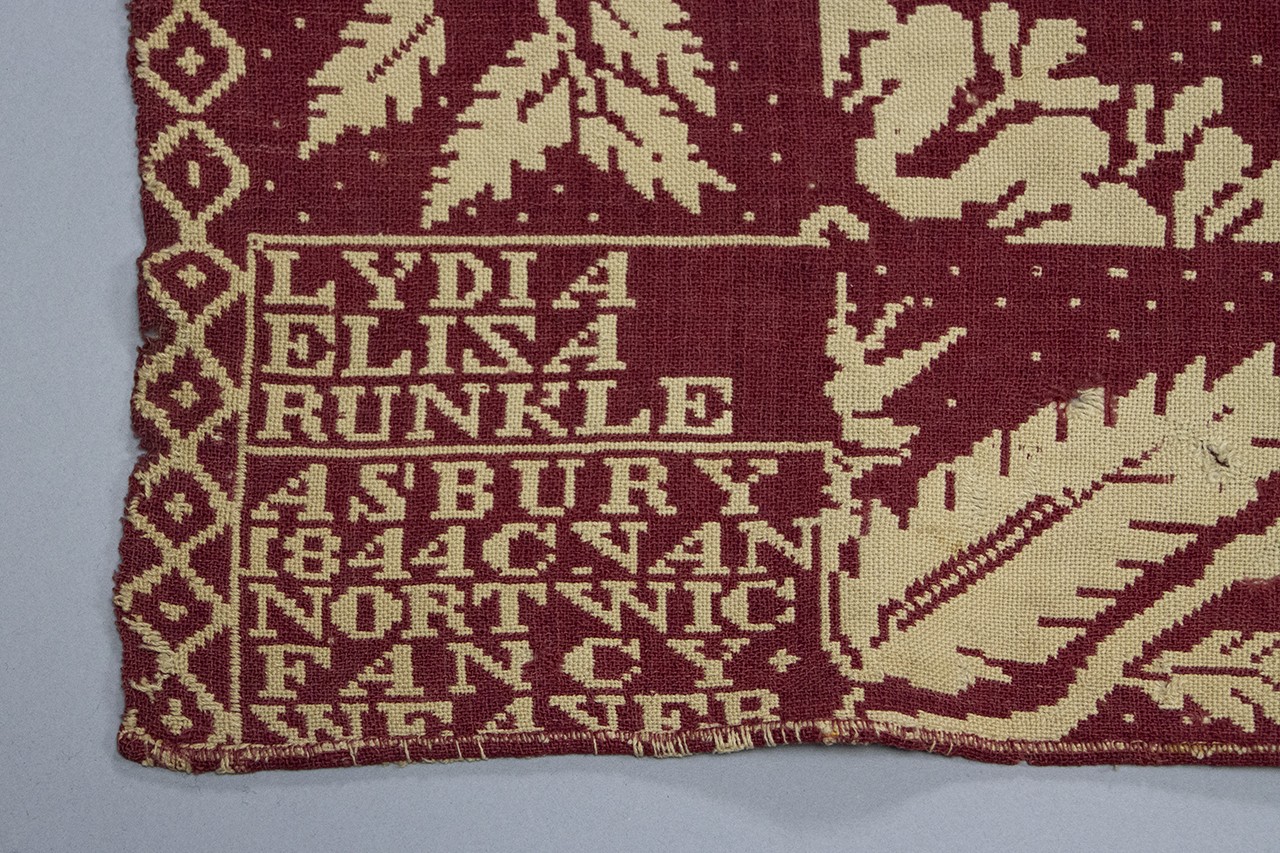 |
Detail of Coverlet for Lydia and Eliza Runkle, 1844
Christian Van Nortwick (American, c. 1802-?); Asbury, New Jersey
Cotton; 88 in.
40581i
Gift of Natalie White |
Sample Size
Christian Van Nortwick was active in New Jersey in the 1830s and ‘40s. Another coverlet made by Nortwick that sold at auction in 2006 shows that he created pieces with almost identical designs, the only differences being distinct recipients and the repetition of the word “liberty” around the border of the textile. The Jacquard loom was a big step forward in weavers being able to mass produce textiles. As is the case with most of the original owners of the coverlets in this post, not much is known about Lydia and Eliza Runkle. The donor, Natalie White, was not related to them and had purchased the textile as a sample to bring to the industrial design course she taught at UCLA.
Text and images may be under copyright. Please contact Collection Department for permission to use. Information subject to change upon further research.








Comments